Are Car Air Fresheners Bad for You?
Table of Contents
Part 1 - Ingredients in Car Air Fresheners
Part 2 - What Are VOCs and Are They Dangerous?
Part 3 - Do Air Fresheners Affect Your Health?
Part 4 - Phthalates and Formaldehyde Risks
Part 5 - Which Air Fresheners Are Most Toxic?
Part 6 - Natural Car Freshener Options
what’s actually in it? The truth is, car air fresheners might be doing more harm than good. So, are car air fresheners bad for you? Short answer: yeah, quite possibly. And it’s not just a case of being a bit pongy—some release chemicals that mess with your hormones, trigger asthma, or even up your cancer risk.
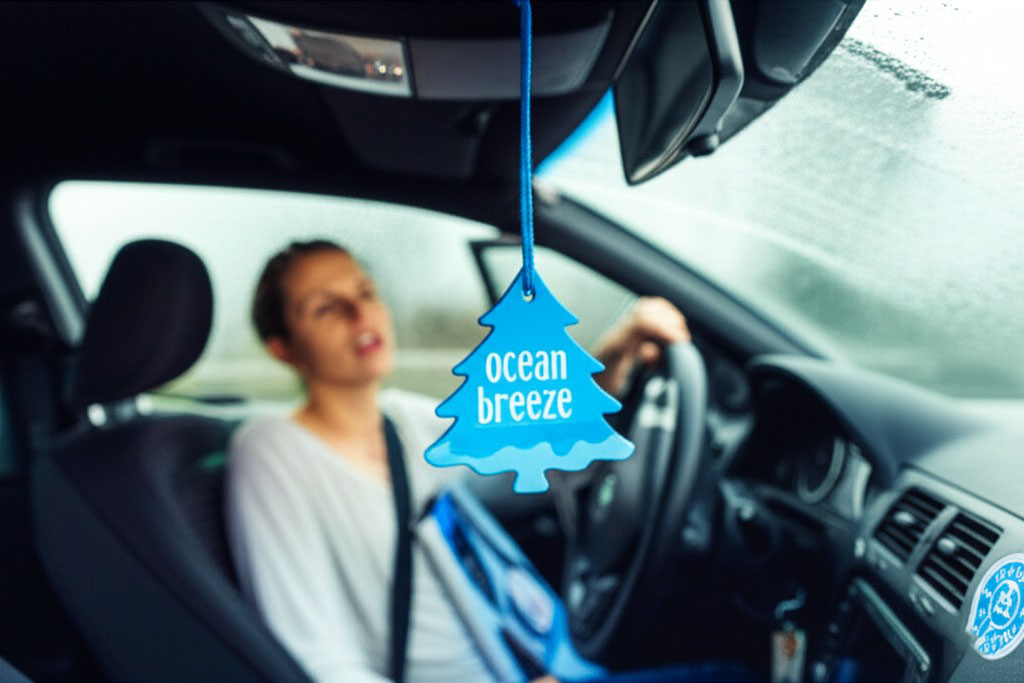
As Dr. Anne Steinemann, a global air quality expert, puts it: “Fragranced products can be as polluting as car exhaust.” Let that sink in.
This article lays it all out—what’s in these things, why they could be messing with your health, which ones are the worst offenders, and what you can use instead that won’t stink up your lungs. Let’s clear the air, yeah?
Ingredients in Car Air Fresheners
Before you hang that “new car” scent, it’s worth knowing what’s actually floating around your cabin. These ingredients aren't just smells — they’re chemical cocktails.
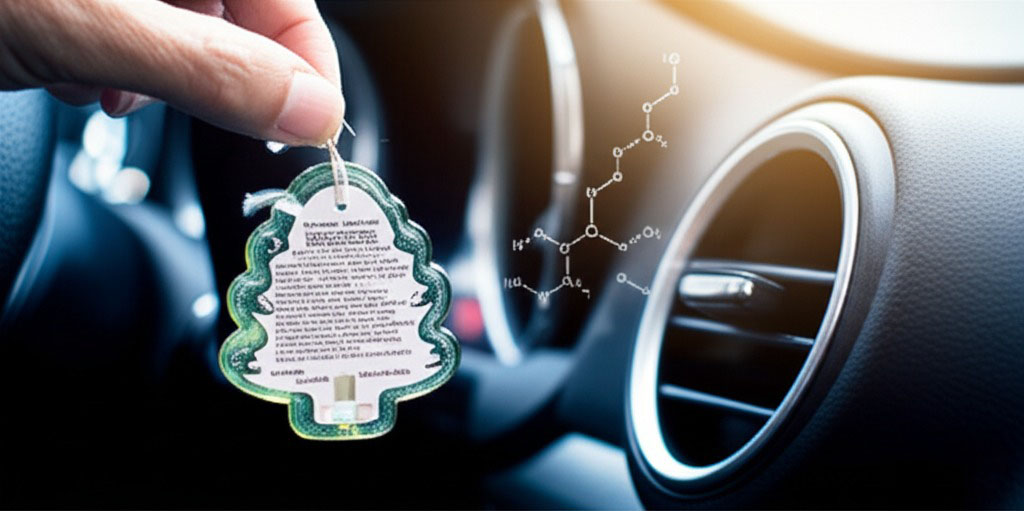
Common compounds in synthetic fragrances
Synthetic fragrances often combine aldehydes, esters, ketones, and terpenes to create signature scents. But don't let the fancy names fool you — many of these are volatile and reactive in warm, enclosed spaces like a car interior.
Musks and phthalates are added to "hold" the scent longer.
Limonene and benzyl acetate offer citrusy or fruity notes but may irritate lungs or skin.
Often, what's listed as "fragrance" on the label could mean a mix of dozens of these compounds.
Role of solvents and stabilisers
Ethanol and propylene glycol act as carriers, helping the scent disperse.
Fixatives like dipropylene glycol make the scent stick around longer, especially on porous surfaces like upholstery.
Antioxidants and UV filters are added to stop scent degradation, especially under sunlight.
Preservatives and diluents are thrown in to increase shelf life — but some can trigger skin sensitivity or headaches.
"People don't realise they're essentially spraying diluted industrial chemicals in small spaces," says Dr. James Elder, air quality researcher.
Fragrance ingredients banned in other countries
Some countries have drawn the line on what can go into air fresheners. Australia? Not so much. Here's a peek:
| Ingredient Name | Reason for Ban | Banned In |
|---|---|---|
| Phthalates | Hormone disruption | EU, Japan |
| Musk ketone | Bioaccumulative in fatty tissue | Norway, EU |
| Butylphenyl methylpropional | Allergic skin reactions | EU (2022) |
You'll still find these lurking in some Aussie-sold fresheners, despite global bans. Bit of a worry, hey?
What Are VOCs and Are They Dangerous?
VOCs might sound like a bit of science speak, but they’re hiding in plain sight—in your car’s air, your fresheners, even the dash. Let’s break it down.
VOC emission levels in enclosed cars
You wouldn’t think your car cabin could be worse than city smog, but in some cases, it is. Volatile Organic Compounds (VOCs) released from air fresheners, upholstery, and plastics can turn your ride into a mobile gas chamber—especially in hot weather. This "off-gassing" builds up in enclosed vehicle interiors where ventilation is often limited.
Formaldehyde and benzene are commonly found in new cars.
VOC concentration is higher when the car is parked in the sun.
Poor indoor air quality in vehicles is linked to nausea, fatigue, and long-term health effects.
| Substance | Avg. Cabin Concentration (µg/m³) | Health Concern |
|---|---|---|
| Formaldehyde | 120 | Respiratory irritation |
| Benzene | 80 | Carcinogenic |
| Toluene | 95 | Neurological effects |
How VOCs react with heat and sunlight
When the sun’s cranking and the car heats up, VOCs don’t just hang around—they start cooking. This kicks off photodegradation and thermal decomposition—big words that mean “they change into even worse stuff.”
Sunlight triggers chemical reactions, creating secondary pollutants.
UV radiation breaks down VOCs, producing ozone and other nasties.
This leads to photochemical smog, especially in poorly ventilated spaces.
Professor James Lee, an atmospheric chemist, puts it like this: “Your car might just be a chemistry lab on wheels, especially on hot days.”
So next time your car smells “clean,” don’t just crack a window—ask what’s in the air you’re breathing.
Do Air Fresheners Affect Your Health?
Breathing in a “fresh” car can come at a cost. Here’s what those pleasant scents might be doing to your body—especially your lungs, brain, and hormones.
Respiratory symptoms linked to air fresheners
Air fresheners often release Volatile Organic Compounds (VOCs) that can spark lung irritation, breathing difficulties, and airway inflammation—especially in people with asthma or allergies.
Symptoms include wheezing, coughing, and tight chest.
Common fragrance chemicals like limonene and benzene can trigger asthma exacerbation.
Chronic use may worsen existing respiratory symptoms in sensitive individuals.
Headaches and neurological sensitivity triggers
That “fresh pine” smell might be messing with your head—literally. Fragrances can spark migraines, dizziness, and even cognitive fog, especially in those with neurological sensitivity. Some people report feeling “buzzed” or lightheaded due to chemical triggers that overstimulate the nervous system. As Dr. Steinemann notes, “Fragrance is the new secondhand smoke—full of neurotoxic compounds.”
Impact on children and developing lungs
Kids aren’t just small adults—their developing lungs are more vulnerable to pollutants. Early-life exposure to indoor pollutants from air fresheners is linked to childhood asthma, allergies in children, and long-term lung development problems.
Their immune systems are still forming.
They're closer to the source (lower breathing zones).
Small exposures can lead to big effects over time.
Hormonal effects and endocrine disruption
Some air fresheners contain Endocrine Disrupting Chemicals (EDCs) like phthalates and parabens, which can mimic or block natural hormones.
Linked to reproductive health issues and thyroid function interference.
May increase risk of metabolic disruption and hormone imbalance.
Exposure to estrogen-mimicking compounds can affect both men and women differently.
Chemical Effects on Human Health
| Chemical | Health Impact | Sensitive Group |
|---|---|---|
| Limonene | Airway inflammation | Asthmatics, children |
| Phthalates | Endocrine disruption | Pregnant individuals |
| Benzene | Carcinogenic, respiratory harm | All populations |
Phthalates and Formaldehyde Risks
Tucked behind that “fresh scent” label could be a cocktail of chemical nasties. This cluster zeroes in on two of the worst: phthalates and formaldehyde.
Formaldehyde emissions in closed car environments
Formaldehyde is a known carcinogen released by many air fresheners during off-gassing, especially in hot cars. Inside a car cabin, where ventilation is often limited, formaldehyde emissions build up fast—affecting your indoor air quality and irritating eyes, nose, and throat.
Here's why it matters:
VOCs like formaldehyde spike in high temps
Emissions are strongest after initial unsealing
Air purification and regular ventilation reduce risk
“We’re seeing levels of formaldehyde in cars that rival those of industrial buildings,” says Dr. Michael Brauer, professor of environmental health.
Hormone disruption caused by phthalate exposure
Phthalates are sneaky little chemicals—used as plasticizers and found in most synthetic fragrances. They don’t just hang in the air; they mess with your body’s endocrine system. Exposure through air fresheners is especially worrying for kids and pregnant women, with studies linking it to developmental effects, altered metabolism, and reproductive health issues.
Car air fresheners release phthalates during daily use.
These endocrine disruptors mimic hormones, throwing off balance.
Health risks increase with long-term exposure.
Keep an eye on labels—if it says “fragrance,” it might be hiding phthalates.
Which Air Fresheners Are Most Toxic?
Not all car fresheners are made equal—some are downright dodgy. Here's a closer look at which ones could be packing the most toxic punch.
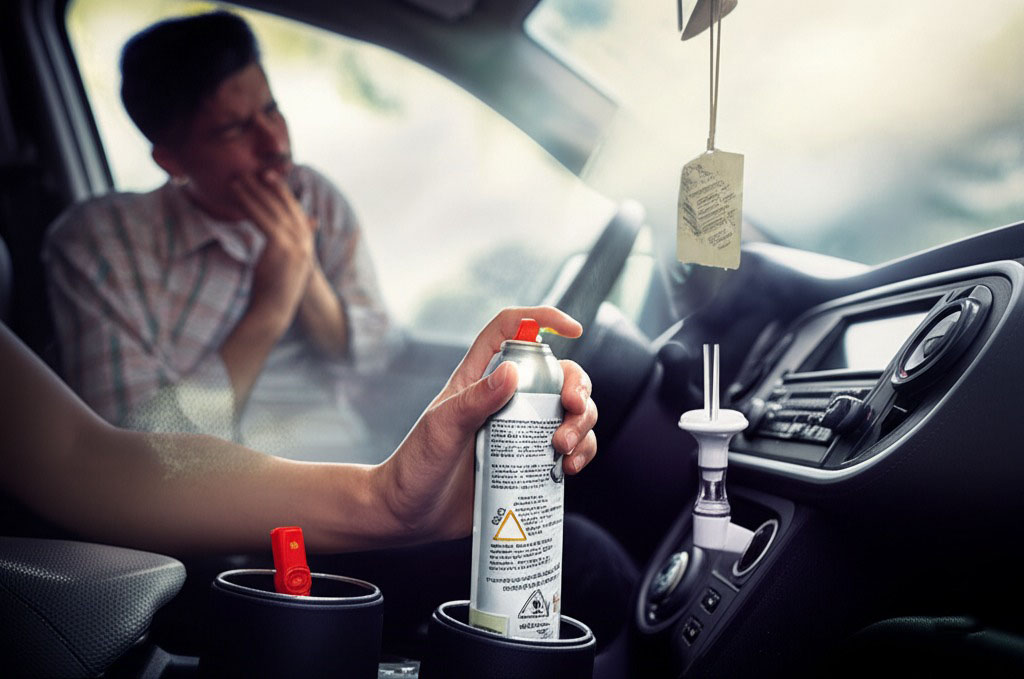
Spray fresheners vs. hanging cards
Spray fresheners release a heavy burst of scent that quickly spreads across your car. But that fast-acting mist often contains more VOCs and solvents than hanging cards.
Hanging cards offer slower scent diffusion
Sprays provide instant but more intense exposure
Sprays often used more frequently = more chemicals Both can be problematic, but sprays tend to pose greater short-term exposure risks due to their concentrated mist and repeated use.
Plug-in units and constant release concerns
Constant Release: These plug-in units pump fragrance 24/7, making them a non-stop source of chemical exposure.
Electrical Safety: Overheating is a fire risk in some low-quality devices.
VOCs in Closed Cars: The continuous nature increases indoor air pollution, especially in parked, sealed cars. Health authorities warn that “Prolonged exposure to VOCs in enclosed spaces can trigger chronic symptoms,” according to the Australian Department of Health.
Imported brands with banned ingredients
⚠️ Some imported brands don’t meet Aussie safety standards. Products banned in the EU or U.S. for containing formaldehyde or phthalates still sneak onto local shelves through grey market suppliers.
Poor regulatory oversight across international trade
Product recalls are rare and hard to enforce
Read labels carefully—if it smells strong and chemical-heavy, give it a miss As a rule of thumb: if it doesn’t say what’s in it, that’s not a good sign.
DIY fresheners with hidden risks
DIY air fresheners sound like a wholesome solution—just a few drops of essential oil, right? But it’s not always that simple. Improper mixing (like using citrus oils with plastics or adding too much alcohol) can irritate the skin or lungs. And when it heats up in the car, you’ve got a little chemistry lab happening on your dashboard.
Pro tip: If you're DIYing, always test on a small patch and stick to well-diluted recipes. Natural doesn’t always mean safe.
High-tox products commonly used in rideshare
Some rideshare drivers use ultra-strong fresheners to mask all-day odours, but those high-tox products can actually make the ride worse—especially for passengers with asthma or scent sensitivities.
| Product Type | Common Chemical | Linked Health Risk |
|---|---|---|
| Hanging cards | Limonene | Respiratory irritation |
| Spray mists | Benzene | Headaches, nausea |
| Plug-in diffusers | Formaldehyde | Hormone disruption, VOCs |
Drivers using multiple air fresheners at once are unknowingly turning their car into a chemical cocktail—bad for them, worse for passengers.
Natural Car Freshener Options
“I have not used a store-bought air freshener in five years,” says Laura Jensen, a Brisbane-based home health consultant. “After finding out what was inside those synthetic sprays, I started mixing lavender essential oil with baking soda in a mason jar. It works a treat and smells like a spa day on wheels.”
Natural car freshener options have become the go-to for drivers chasing clean air without chemicals. Aromatherapy experts like Dr. James Connelly from the Australian Natural Therapists Association agree: “Essential oils such as peppermint, eucalyptus, and lemon not only smell clean, they support respiratory clarity.”
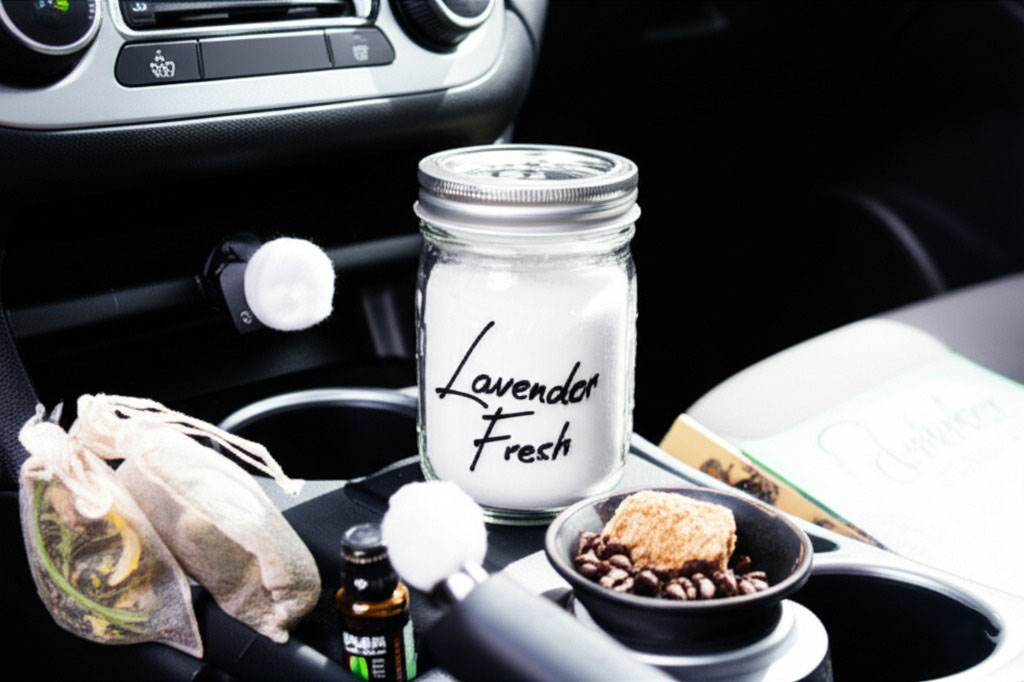
Recommended low-tox freshener ingredients include:
Essential oils dabbed on cotton balls or diffused using car vent diffusers
Baking soda in breathable sachets to neutralize odours
Activated charcoal for high-efficiency odour control
Citrus peels, pine cones, and coffee beans for subtle, dry freshness
Dried herbs like rosemary or lavender in scented sachets
DIY options using these materials are often reusable, cost-effective, and free from the phthalates or formaldehyde found in many conventional products. Products like the “Green Car Fragrance Kit” from EcoDrive Australia have even won awards for clean-label transparency, with clear certification from ACO and a 5-star customer rating on ProductReview.
Natural does not mean boring—it means breathing easy.
Are “Non-Toxic” Air Fresheners Really Safe?
Just because it says “eco” or “non-toxic” doesn’t mean it’s safe. Let’s unpack the fluff behind the labels and find out what’s really going into your car air freshener.
Greenwashing in air freshener marketing
Greenwashing is rife in air fresheners. Brands slap on leaves, green logos, or words like “clean” or “planet-friendly”, hoping we won’t look too close.
These marketing claims often lack substance or regulatory backing.
“Environmental claims” without proof fall under deceptive advertising.
Consumers often misread vague language as signs of sustainability or corporate social responsibility.
“If a product calls itself ‘green’ but won’t list what’s in it, that’s not green — that’s hiding,” says Dr. Helen Norris, environmental toxicologist.
Unregulated terms like “eco” or “natural”
These feel-good buzzwords sound safe but aren’t backed by law.
Unregulated terms mean there’s no requirement for ingredient vetting.
“Natural” might include allergens, irritants or petrochemical derivatives.
Consumer protection agencies have long called for tighter labeling regulations, but brands often dance around loopholes.
Without certification bodies, these eco-labels are mostly just marketing jargon.
Brands using undisclosed fragrance blends
A lot of brands hide behind the word “fragrance” to avoid disclosing scent chemicals that may affect your health.
These proprietary formulas often contain dozens of undisclosed ingredients.
Even “non-toxic” products may use blends with allergen information left off the box.
Ingredient disclosure is optional in many places, protected under trade secrets laws.
Lack of chemical transparency can be risky for people with asthma, skin sensitivities, or MCS (Multiple Chemical Sensitivity).
How to verify safety claims on packaging
Here’s how to suss out if your air freshener’s claims stack up:
| Safety Claim Type | What to Look For | Trust Level |
|---|---|---|
| “Certified non-toxic” | Third-party logos (e.g. UL ECOLOGO) | Moderate to high |
| “All-natural” | Clear ingredient list + no fragrance | Low |
| “Fragrance-free” | Certified with lab testing | High |
Third-party testing beats any marketing puffery.
Look for certifications, scientific evidence, and regulatory compliance symbols like ISO or EPA Safer Choice.
If the packaging reads more like poetry than a factsheet—chuck it back on the shelf.
Best Ways to Keep Your Car Smelling Fresh
“I swapped out synthetic air fresheners for a pouch of activated charcoal,” said Lauren Mitchell, an eco-conscious rideshare driver from Melbourne. “Now the air feels lighter, and my passengers always comment on the fresh vibe.” Her experience mirrors a growing shift across Australia, as more drivers move toward safer, more natural odor solutions. Traditional scents mask bad smells. Proper car cleaning and odor elimination address the source.
Leading automotive hygienist Dr. Kevin Stroud notes, “A clean cabin is your best defense. Dust, sweat, fast food—they all trap smells in your upholstery and vents. A clogged cabin air filter is basically recirculating yesterday’s burrito.” He recommends monthly ventilation, vacuuming mats weekly, and refreshing the air filter quarterly.
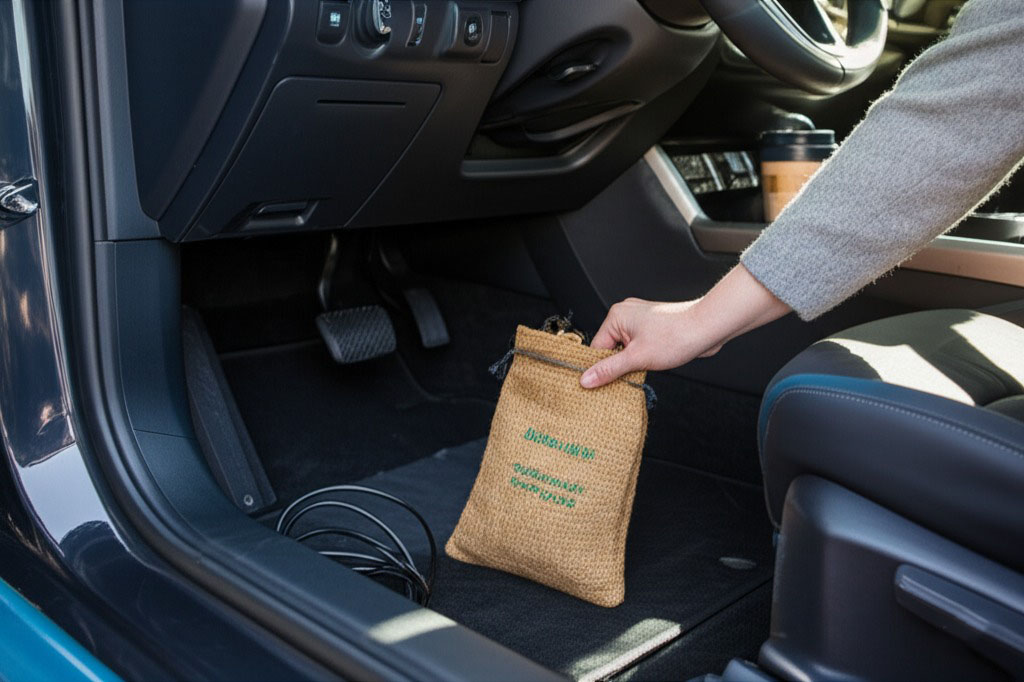
For natural scent-lovers, essential oils offer rich aroma without toxins. Dab a few drops onto a felt pad and clip it to your vent. Add baking soda under the seats for moisture control. Toss in a bag of activated charcoal to neutralise stubborn smells.
Key routine checklist:
Deep upholstery cleaning every 3 months
Replace cabin air filter every 6–12 months
Use natural fresheners instead of synthetic sprays
ventilation
Clean car, clear air—no chemicals required.
Conclusion
You wouldn’t pour petrol on your floor mats to make the car smell good—so why hang up a chemical-laced tree that does nearly as much damage? From hormone-disrupting phthalates to VOCs that mess with your breathing, the risks are real.
As air quality researcher Dr. Steinemann puts it, “Fragranced products are a major source of indoor air pollution.”
Phthalates – used to make scents last longer, but known hormone disruptors
Benzene derivatives – linked to respiratory and immune issues
Limonene – a citrus scent that can react with ozone and create formaldehyde
Formaldehyde – a known carcinogen found in trace amounts
Volatile organic compounds (VOCs) – a broad class of chemicals that can affect indoor air quality
Not really. Plug-in air fresheners can release VOCs continuously, even when the car is off. This means you’re breathing in chemicals long after the initial “fresh scent” wears off. Over time, that can trigger headaches, asthma, and other health issues—especially in enclosed spaces like vehicles.
Irritate eyes, nose, and throat
Trigger asthma or worsen breathing conditions
Cause dizziness and headaches in confined spaces
Prolonged exposure may increase cancer risk
Generally, yes—but they’re not risk-free. Pure essential oils are plant-based and don’t contain the same harsh synthetics as commercial air fresheners. That said, they can still cause issues for people with allergies, pets, or if used in large doses without proper ventilation.
Phthalates are chemical plasticisers used to make scents last longer in air fresheners. The problem? They’re known to disrupt hormones, particularly testosterone, and have been linked to fertility issues, developmental problems in children, and even some cancers. Sneaky part: manufacturers often hide them under the term “fragrance.”
Tension headaches or migraines
Nausea, dizziness, or brain fog
Sneezing or sinus irritation
A feeling of “heaviness” in enclosed spaces
Baking soda sachets for neutralising smells
Activated charcoal to absorb odours
Dried herbs or citrus peels for a natural scent
Essential oil diffusers (non-heated) with gentle oils like lavender or eucalyptus
Keep windows cracked when parked (where safe)
Clean spills and carpets regularly
Use natural deodorisers like charcoal or baking soda
Avoid spraying anything directly into the air vents
That’s where marketing gets cheeky. “Natural” on a label doesn’t mean the product is 100% plant-based. Many so-called natural air fresheners still use synthetic fragrance blends, which can include hundreds of undisclosed chemicals. If you see “fragrance” or “parfum” on the label without clarification—it’s probably not as clean as it sounds.

Leave a comment